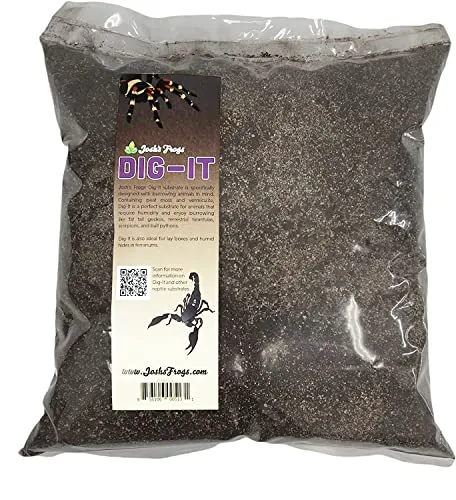Australian Tarantula Substrate Understanding Needs
Choosing the right substrate is crucial for the health and well-being of your Australian tarantula. The substrate serves multiple purposes, primarily providing a comfortable and safe environment that mimics their natural habitat. It helps regulate humidity levels, allows for burrowing, and provides a surface for the tarantula to walk and live on. A well-chosen substrate supports the tarantula’s physical and psychological needs, contributing to its overall health and longevity. Failing to provide a suitable substrate can lead to issues like poor molting, stress, and even health complications. Understanding the specific needs of your tarantula species, especially regarding humidity and burrowing behavior, is the first step towards making an informed substrate choice.
Humidity Requirements for Australian Tarantulas
Humidity is a critical factor in tarantula care, particularly for Australian species. These tarantulas often originate from environments with varying humidity levels, and replicating these conditions in captivity is essential. Proper humidity aids in successful molting, preventing desiccation, and ensuring the tarantula’s overall well-being. The required humidity level varies depending on the species; some Australian tarantulas thrive in more humid environments, while others prefer drier conditions. Researching the specific humidity requirements of your tarantula species is a must. Humidity levels can be measured using a hygrometer, allowing for accurate monitoring and adjustments to the enclosure’s environment. Regularly misting the enclosure or providing a water dish are common methods to maintain appropriate humidity levels, but the substrate’s role in this is very important.
Substrate’s Role in Humidity Control
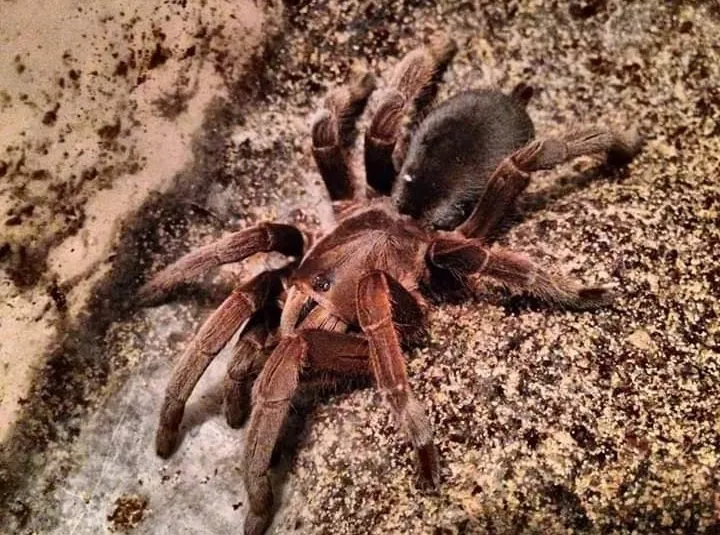
The substrate acts as a humidity reservoir and regulator, absorbing and slowly releasing moisture into the enclosure. Different substrate materials have varying water-retention capabilities. For species that need higher humidity, substrates like coconut fiber and sphagnum moss are excellent choices because they hold moisture effectively. These materials gradually release moisture into the air, creating a humid environment. Conversely, substrates like vermiculite can also aid in humidity control, but must be carefully managed to prevent the enclosure from becoming too wet. The substrate’s ability to wick moisture away from the surface, and to then slowly release that moisture, is very important, preventing the enclosure from becoming a swamp. Properly chosen and maintained substrate helps prevent the tarantula from suffering dehydration, and also facilitates successful molting, which is essential for the tarantula’s growth and well-being. If the substrate is allowed to dry out, the tarantula may have issues during the molting process, which can have fatal consequences. Therefore, choose wisely!
Choosing the Right Substrate
Selecting the correct substrate is vital to create the optimal environment for your Australian tarantula. Consider factors such as humidity needs, burrowing behavior, and ease of maintenance. The ideal substrate should hold moisture, allow for burrowing, and be non-toxic. Common choices include coconut fiber, sphagnum moss, and sometimes a mix of these with other materials. The substrate should be free of any chemicals or pesticides that could harm the tarantula. Always clean and prepare the substrate thoroughly before introducing it to the enclosure. Researching the natural habitat of your tarantula species can provide valuable insights into the substrate that best suits its needs. The substrate should be easy to handle, and should not have any sharp edges that can harm your tarantula.
Coconut Fiber
Coconut fiber, also known as coir, is a very popular substrate for tarantulas due to its excellent moisture-retention properties and natural origin. It’s made from the husk of coconuts and provides a safe and comfortable environment for tarantulas. Coconut fiber is readily available and relatively inexpensive. It also allows for burrowing, which is essential for many tarantula species. It’s easy to work with, and it has a natural aesthetic, and is suitable for many species. Its ability to hold moisture makes it ideal for maintaining appropriate humidity levels. However, you should check the fiber for any sharp pieces before use. It’s often compressed into bricks or blocks and needs to be rehydrated before use.
Pros and Cons of Coconut Fiber
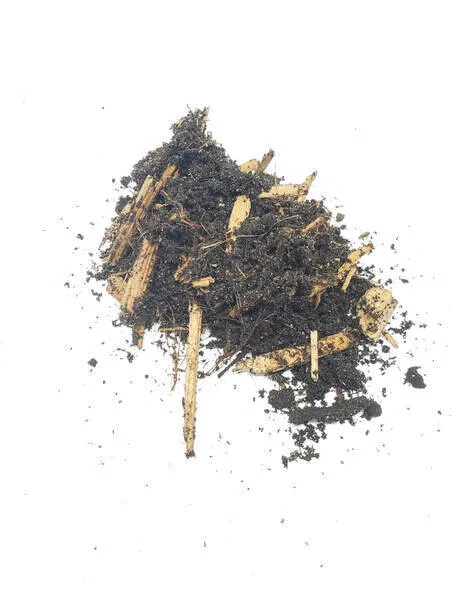
Coconut fiber offers numerous benefits, including great moisture retention, good burrowing potential, and natural appearance. It’s also relatively easy to clean and replace. However, it can sometimes be dusty, and it might require regular monitoring to prevent mold growth if the enclosure is too humid. It can also occasionally attract small mites if the substrate is not properly maintained, or if food is left in the enclosure for too long. Some tarantula keepers mix it with other substrates, such as sphagnum moss or potting soil, to add extra benefits. Regular inspection is necessary to ensure the substrate is healthy, and the enclosure has appropriate ventilation. The most common issues are due to overwatering.
Sphagnum Moss
Sphagnum moss is another excellent substrate choice, particularly for species that require high humidity levels. Sphagnum moss is known for its superior water-retention capabilities, making it ideal for creating a humid environment. It also offers a soft and natural surface for the tarantula. Sphagnum moss is readily available and offers a natural appearance, enhancing the enclosure’s aesthetic. It’s often used in combination with other substrates to boost humidity levels. However, it is very important to select a product that is free of pesticides and chemicals. You can purchase it in compressed or dried form, requiring rehydration before use.
Pros and Cons of Sphagnum Moss
Sphagnum moss excels at retaining moisture, creating an ideal humid environment, which supports healthy molting. It also looks great, adding a natural feel. It can be used as a substrate on its own, or mixed with other substances to fine-tune the enclosure conditions. A potential downside is that it can become waterlogged if over-misted, leading to mold growth and potential health issues. It is more expensive than some other alternatives. Regular monitoring and maintenance are critical to avoid these issues. Proper ventilation is essential when using sphagnum moss. Avoid excessive amounts of water when misting and ensure proper airflow.
Other Substrate Options
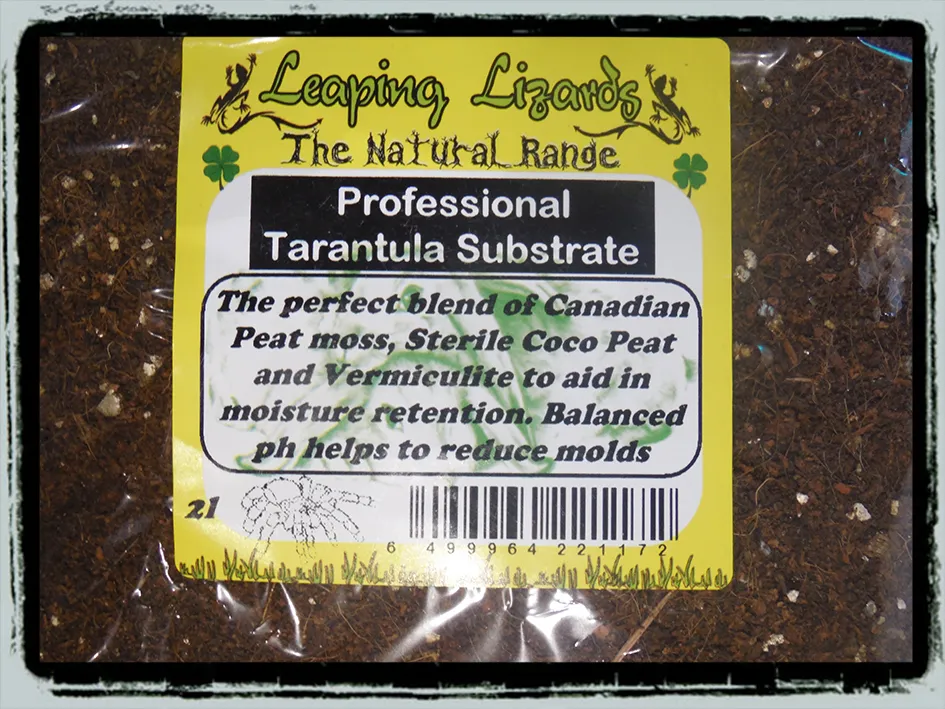
Besides coconut fiber and sphagnum moss, several other substrate options can be considered. The best choice often depends on your tarantula species and the conditions it requires. Some keepers use a mix of substrates to achieve specific humidity and burrowing properties. Always ensure that any substrate you choose is safe, non-toxic, and free of any harmful chemicals. Thorough research is essential to decide which substrate best suits your tarantula’s specific needs. You may need to test and change the substrate to find the optimal mixture for your tarantula’s health and happiness. Experimentation is part of the fun!
Potting Soil
Potting soil, used with caution, can be an option for some tarantula species. It is important to use a high-quality, organic potting soil that does not contain fertilizers, pesticides, or other chemicals. Ensure that the soil is well-draining to avoid excessive moisture buildup. Potting soil often works well for burrowing species, and can be mixed with other substrates to improve moisture retention. You must sterilize the potting soil before adding it to your tarantula’s enclosure to eliminate any potential pests or pathogens. Bake it in the oven or microwave to kill any unwanted organisms. This preparation step is essential, and should never be skipped.
Vermiculite and Perlite
Vermiculite and perlite are often used in combination with other substrates to improve aeration and moisture retention. Vermiculite is a mineral that absorbs water, and perlite is a volcanic glass that enhances drainage. These materials can be beneficial in preventing the substrate from becoming too compacted and in managing humidity levels. When using vermiculite and perlite, it’s essential to ensure they are clean and free of any additives. Overuse can sometimes lead to overly humid conditions, so careful monitoring is required. They’re often added in small amounts to the primary substrate to fine-tune the environment to your tarantula’s needs.
Substrate Depth and Layering
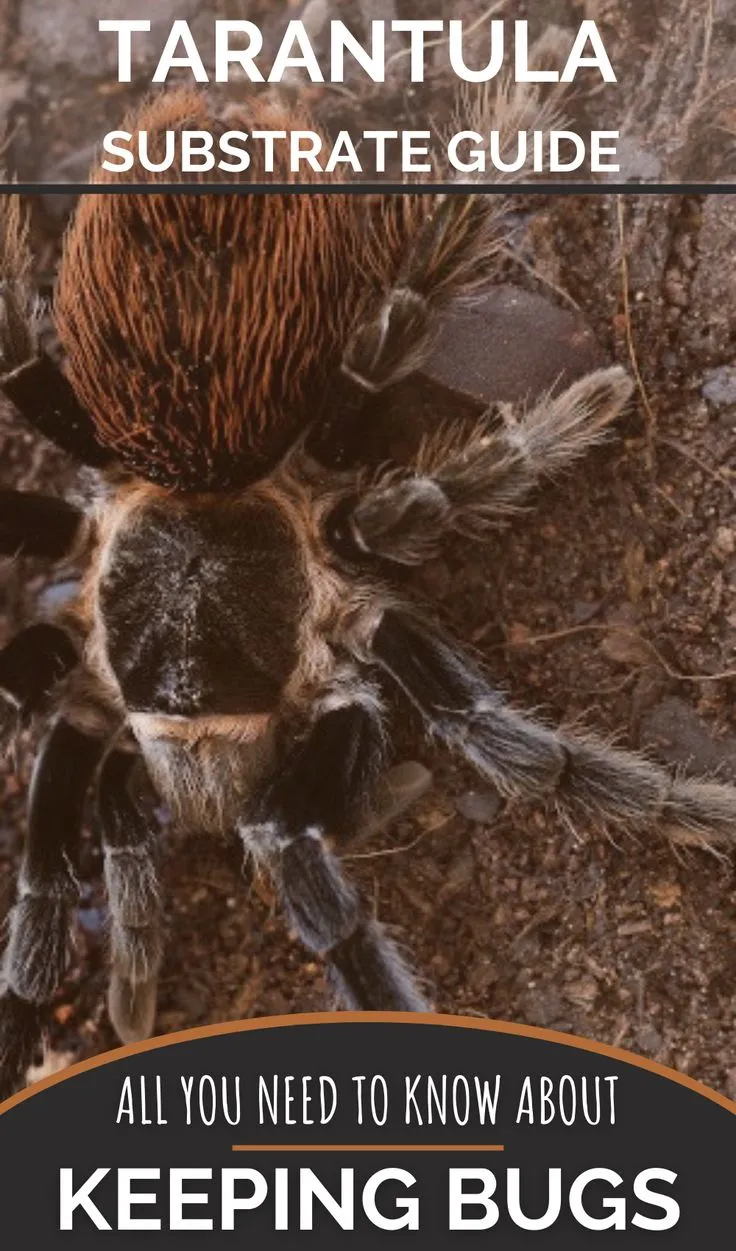
The depth of the substrate is a significant factor, directly influencing humidity control and burrowing capabilities. Proper layering can further optimize the environment, providing a comfortable and functional space for your tarantula. The depth you select should align with the needs of your tarantula’s species, especially with regards to burrowing behavior. Appropriate substrate depth and layering ensure that your tarantula can thrive in an environment that supports its natural behaviors.
Ideal Substrate Depth for Burrowing
Burrowing species require deeper substrate layers to allow them to create tunnels and hideaways. The recommended depth for burrowing tarantulas is usually at least twice the length of the tarantula’s leg span. This depth provides ample space for burrowing and offers a sense of security. For arboreal species that spend most of their time above ground, a shallower substrate depth may suffice, but some burrowing potential is still beneficial. Always research your tarantula’s specific needs to determine the ideal depth. The substrate depth must allow for normal behavior, and also help with the tarantula’s general well-being. If you notice that your tarantula is having issues, the depth of the substrate should be considered.
Layering Techniques for Optimal Humidity
Layering the substrate can help to create humidity gradients within the enclosure. A common technique involves placing a layer of drainage material, such as gravel or hydro balls, at the bottom, followed by a layer of substrate. This layering allows excess moisture to drain away from the top layer. Another method is to mix different substrates in layers, such as placing a more moisture-retentive layer at the bottom and a drier layer on top. This can help to maintain a consistent humidity level throughout the enclosure. Proper layering techniques can significantly improve the comfort and health of your tarantula by providing the ideal moisture environment.
Maintaining Your Substrate
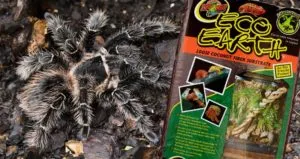
Regular maintenance is crucial for maintaining a healthy and safe environment for your tarantula. This includes regular monitoring, spot cleaning, and timely substrate replacement. Properly maintained substrate supports the tarantula’s health, and helps prevent the growth of harmful bacteria and molds. Consistent care prevents health complications, and it creates the best environment for your pet. Following these simple guidelines will contribute to your tarantula’s well-being.
Regular Monitoring and Spot Cleaning
Regular monitoring is essential for maintaining a healthy enclosure. Observe the substrate for any signs of mold, excessive moisture, or fecal matter. Spot cleaning involves removing any visible waste, uneaten food, and dead insects promptly. Use appropriate tools like small tongs or a scoop to remove debris without disturbing the substrate too much. It’s very important not to disturb the tarantula or its burrow. Inspect the substrate regularly for signs of mites or other pests. Regularly monitoring and cleaning will help keep the enclosure clean and reduce the risk of health issues.
Replacing Substrate
Over time, the substrate will need to be completely replaced to ensure a healthy environment. The frequency of replacement depends on the type of substrate and the size of the enclosure. As a general guideline, it is a good idea to replace the substrate every 6 to 12 months, or sooner if it becomes heavily soiled or starts to smell bad. When replacing the substrate, completely remove the old material, clean the enclosure thoroughly, and then add fresh, prepared substrate. Ensure that the new substrate is of the same type, or a type that is known to be safe for the species. This process helps maintain the health and well-being of your tarantula.
Signs of Substrate Problems
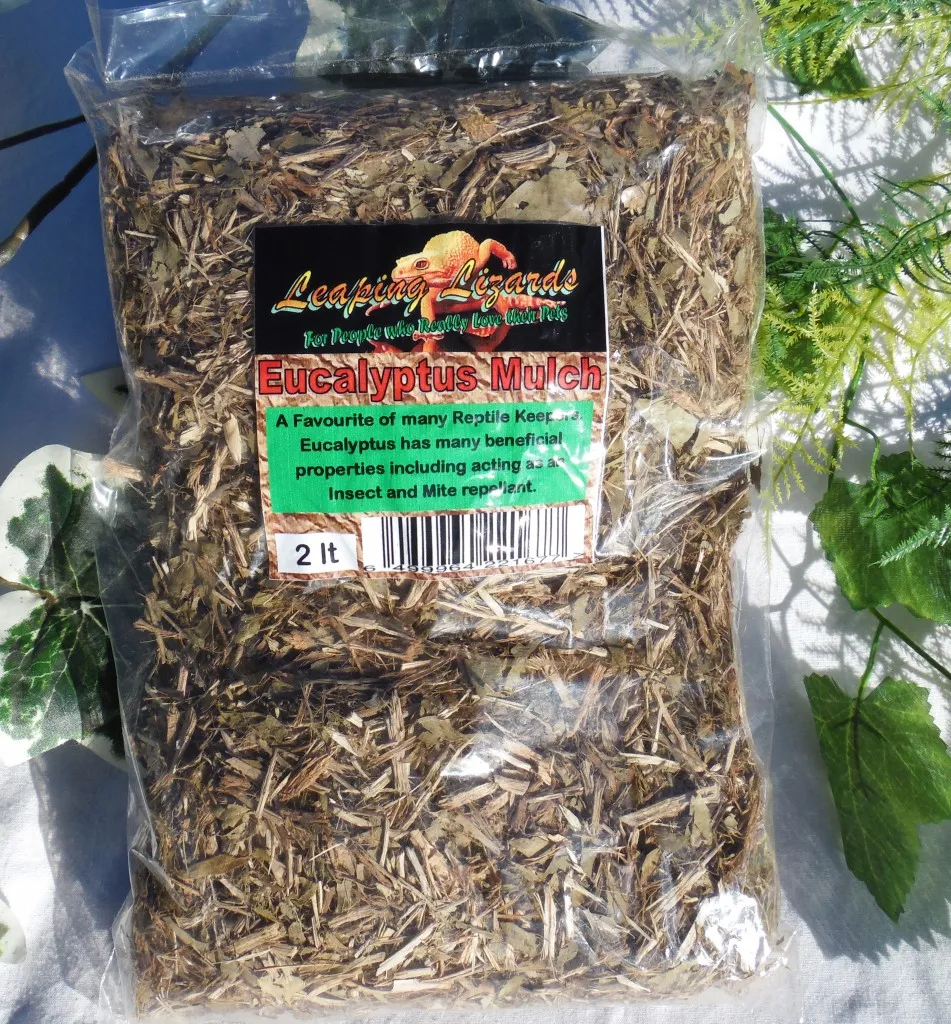
Be attentive to the signs of substrate problems. These can include mold growth, a foul odor, or excessive moisture. If you observe mold, remove the affected substrate immediately and address the underlying cause, usually poor ventilation. If the substrate is excessively wet, reduce misting frequency and improve ventilation. A foul odor indicates a buildup of waste and bacterial activity; replace the substrate as soon as possible. Changes in your tarantula’s behavior, such as a loss of appetite or lethargy, can also indicate problems with the substrate. Addressing these signs early will protect your tarantula’s health and well-being. If you see any issues, it is always a good idea to consult with a veterinarian that is familiar with tarantulas.
